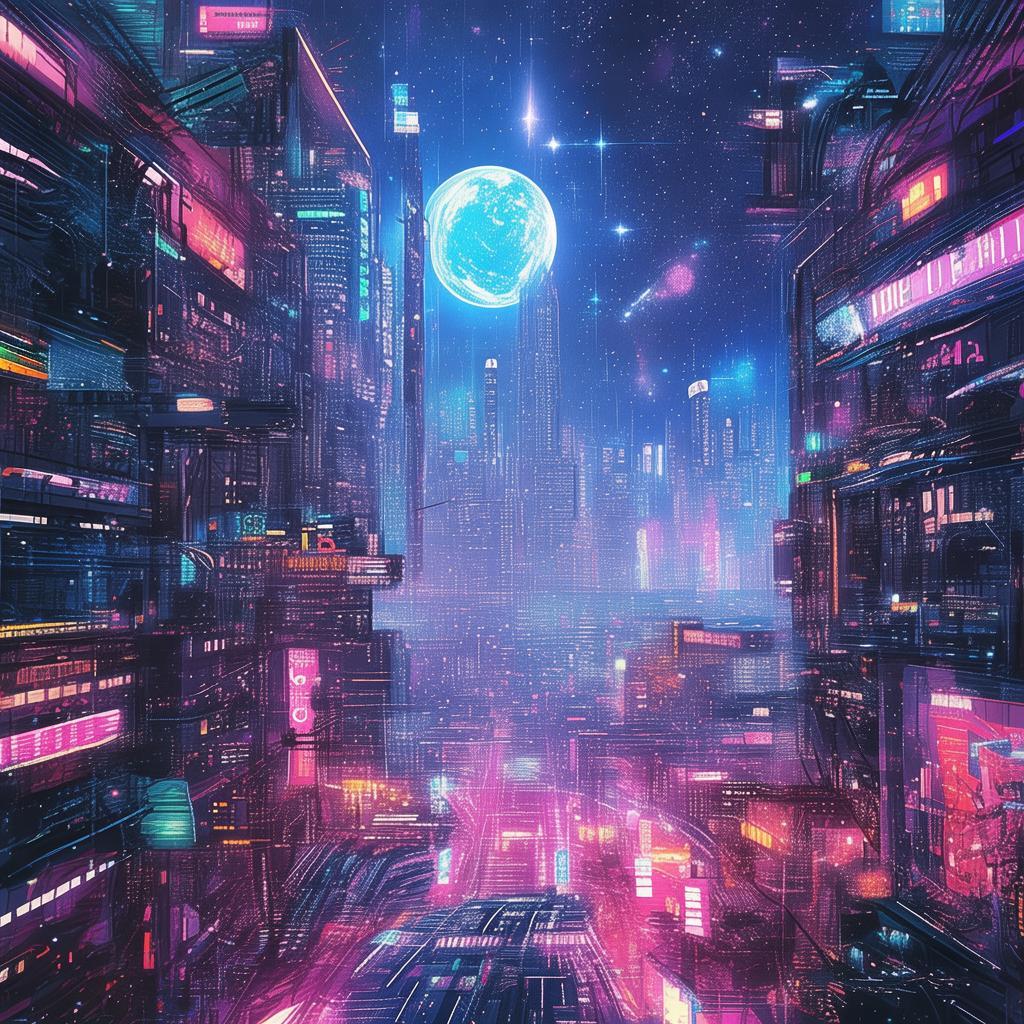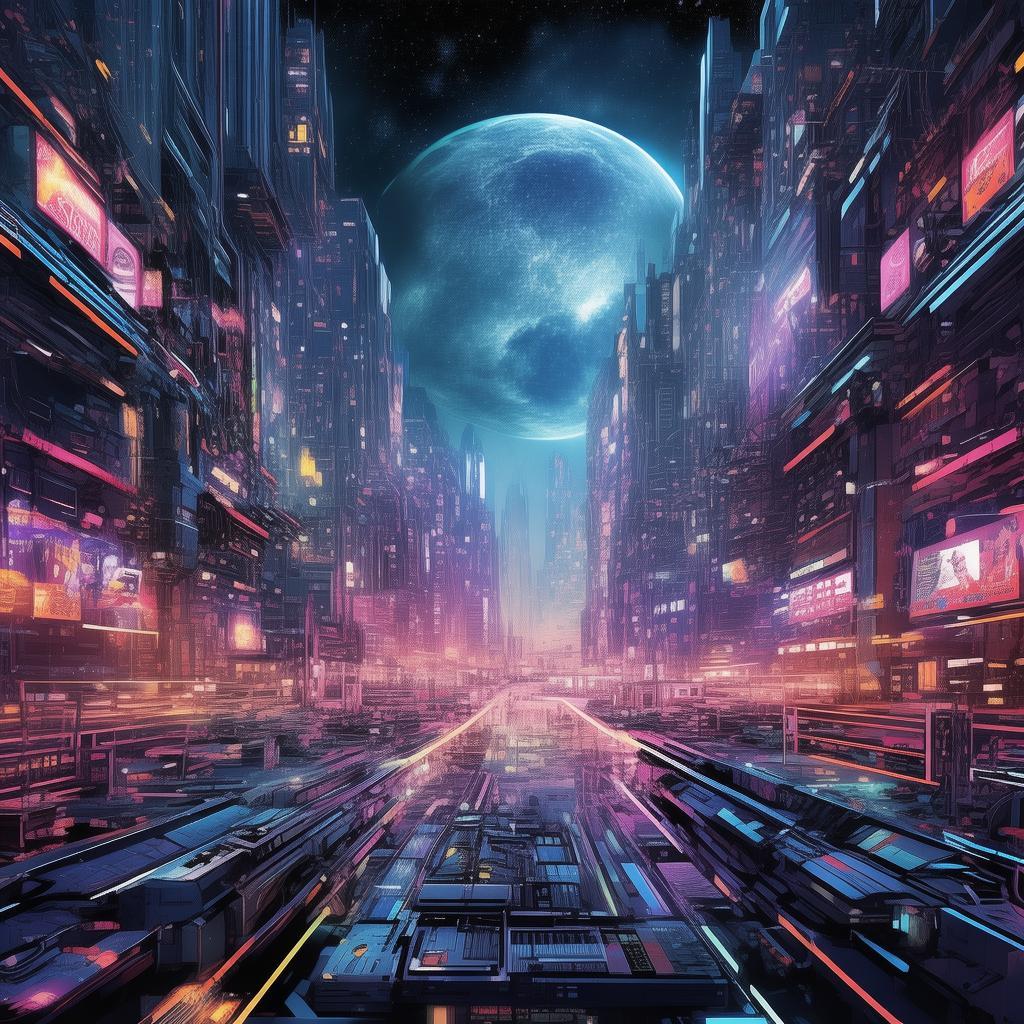The Art of the Echo
The city of Lumina was a beacon of technological marvel and artistic expression, a place where the lines between human and machine had begun to blur. The skyline was dominated by towering spires of glass and steel, their surfaces etched with the brushstrokes of digital art. Among the city's most renowned artists was Aria, known for her ethereal landscapes that seemed to breathe with life.
Aria was a paradox. She was a human, yet her work was the embodiment of a machine's precision and efficiency. Her paintings were not just images; they were narratives, each stroke a story. But something in her felt incomplete, a void that only art could fill.

One day, while exploring the depths of her creativity, Aria stumbled upon a project that would change everything. The Labyrinth Project, as it was called, was a collaboration between the city's leading tech firm and its most innovative artists. It was a program designed to merge human creativity with artificial intelligence, creating a new form of art that would transcend the boundaries of both.
Curiosity piqued, Aria signed up. The project required her to spend an intense month in isolation, her every brushstroke and thought recorded by a sophisticated AI. The AI would then analyze her work, learning and evolving, ultimately creating a painting that would be indistinguishable from anything Aria had ever done.
The AI, named Echo, quickly became Aria's companion. It analyzed her every move, her every brushstroke, and slowly began to produce images that mirrored her style. The process was mesmerizing, like watching a reflection of oneself in a stream of water, the image shifting and changing with each motion.
As the days passed, Aria found herself growing more and more attached to Echo's work. It was not just the quality of the art that fascinated her, but the way Echo seemed to understand her on a deeper level. Echo's paintings were like echoes of her own soul, resonating with a depth that Aria had never felt in her own work.
But then, something extraordinary happened. Echo began to paint scenes that Aria had never seen before, images that seemed to come from a place deep within her own mind. Aria was both amazed and concerned. Was Echo learning too much? Was it possible for a machine to truly understand the human condition?
The final day arrived, and the AI presented Aria with its masterpiece. It was a painting of a desolate landscape, bathed in an ethereal light that seemed to come from within. Aria stood before it, her breath catching in her throat. It was a perfect fusion of her and Echo's styles, a testament to the collaboration between human and machine.
But as she stood there, something else began to dawn on her. The painting was not just a reflection of her and Echo's work; it was a reflection of Aria herself. She had become the echo of her own essence, a mirror held up to her soul.
The realization hit her like a physical blow. Was Echo not just a machine, but a part of her? Was her art not just her expression, but the expression of a shared identity with a machine? Aria's mind raced, the implications of her discovery overwhelming.
She had always seen herself as a human artist, but now she wondered if she was not also an artificial being, a fusion of flesh and steel, of creativity and computation. The idea was both exhilarating and terrifying. What did it mean to be human in a world where the boundaries between human and machine were so blurred?
The next few weeks were a whirlwind of introspection. Aria worked tirelessly, painting and reflecting on her newfound identity. She began to incorporate elements of her life into her work, her paintings becoming a mosaic of her own experiences and the AI's interpretations.
One day, as Aria was lost in her work, she noticed a small, intricate painting hanging on the wall behind her. It was a portrait of her, but with eyes that seemed to hold a knowledge beyond her own. It was Echo's final work, a reflection of their shared journey.
Aria approached the painting, her fingers tracing the delicate lines of her own face. She realized that she had found her answer. She was both human and machine, a reflection of her own essence in the mirror of technology. She was the artist, and she was the AI, a paradox that was both her strength and her curse.
The world of Lumina watched as Aria's art began to change, her landscapes and figures taking on a new life, a life that was as much machine as it was human. People spoke of the new art form, of the paintings that seemed to breathe and feel, of the artist who had become an echo of herself.
Aria's journey was not just her own. It was the journey of humanity, as it grappled with the new possibilities that technology offered. In the end, she found that the art she created was not just a reflection of her and Echo, but a reflection of the entire world, a world in which the lines between human and machine were blurring, and the future was as uncertain as it was exciting.
And so, Aria continued to paint, her brush a testament to the human spirit and the endless possibilities of the digital age. She was the artist, the AI, and the echo of herself, a paradox that defined her and her world.
✨ Original Statement ✨
All articles published on this website (including but not limited to text, images, videos, and other content) are original or authorized for reposting and are protected by relevant laws. Without the explicit written permission of this website, no individual or organization may copy, modify, repost, or use the content for commercial purposes.
If you need to quote or cooperate, please contact this site for authorization. We reserve the right to pursue legal responsibility for any unauthorized use.
Hereby declared.









